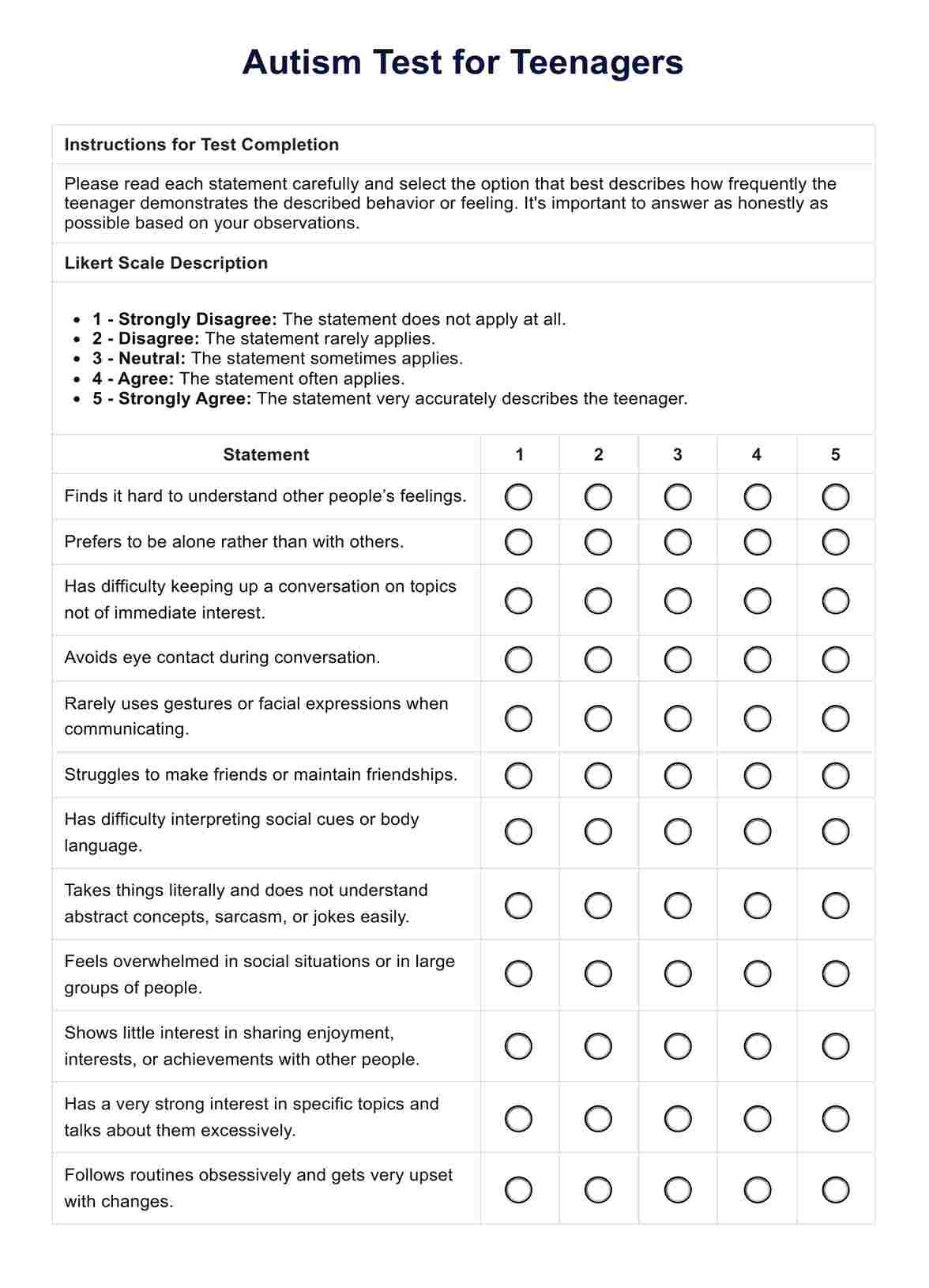A multidisciplinary team usually conducts the assessment, including a psychologist, a psychiatrist, a speech and language therapist, and sometimes an occupational therapist specializing in developmental disorders.

Autism Test for Teenagers
Explore our Autism Test for Teenagers, designed to screen social interaction skills. Includes example questions. Get your Free PDF Download now.
Autism Test for Teenagers Template
Commonly asked questions
Autism can affect a teenager's social interactions, communication skills, and behavior, potentially leading to challenges with forming friendships, understanding social cues, and managing sensory sensitivities.
Early diagnosis of autism can lead to early intervention, which can significantly improve a child's development and quality of life. It allows for tailored support and education strategies to be implemented sooner, helping the child to develop essential social, communication, and behavioral skills.
EHR and practice management software
Get started for free
*No credit card required
Free
$0/usd
Unlimited clients
Telehealth
1GB of storage
Client portal text
Automated billing and online payments











